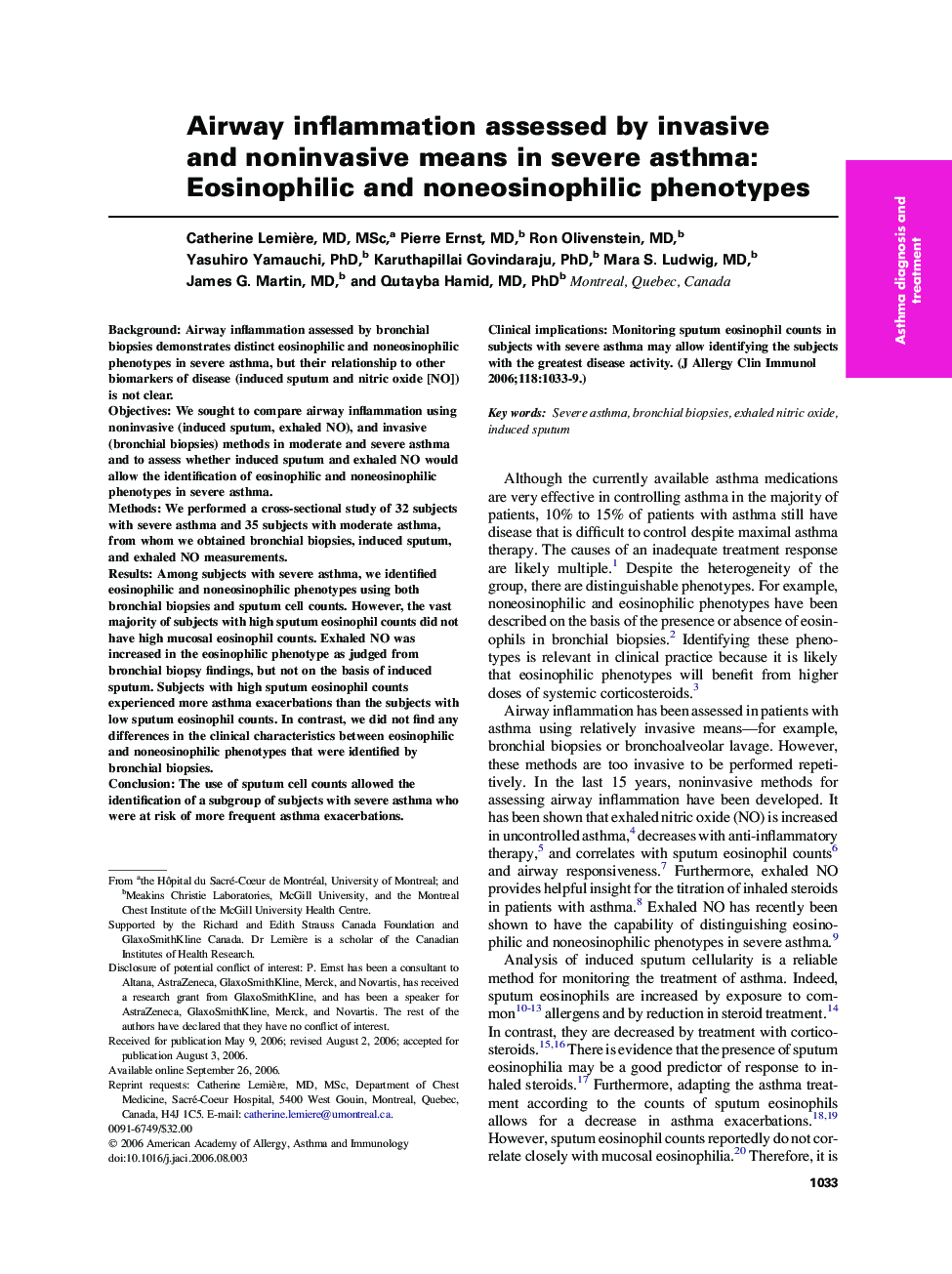| Article ID | Journal | Published Year | Pages | File Type |
|---|---|---|---|---|
| 3202547 | Journal of Allergy and Clinical Immunology | 2006 | 7 Pages |
BackgroundAirway inflammation assessed by bronchial biopsies demonstrates distinct eosinophilic and noneosinophilic phenotypes in severe asthma, but their relationship to other biomarkers of disease (induced sputum and nitric oxide [NO]) is not clear.ObjectivesWe sought to compare airway inflammation using noninvasive (induced sputum, exhaled NO), and invasive (bronchial biopsies) methods in moderate and severe asthma and to assess whether induced sputum and exhaled NO would allow the identification of eosinophilic and noneosinophilic phenotypes in severe asthma.MethodsWe performed a cross-sectional study of 32 subjects with severe asthma and 35 subjects with moderate asthma, from whom we obtained bronchial biopsies, induced sputum, and exhaled NO measurements.ResultsAmong subjects with severe asthma, we identified eosinophilic and noneosinophilic phenotypes using both bronchial biopsies and sputum cell counts. However, the vast majority of subjects with high sputum eosinophil counts did not have high mucosal eosinophil counts. Exhaled NO was increased in the eosinophilic phenotype as judged from bronchial biopsy findings, but not on the basis of induced sputum. Subjects with high sputum eosinophil counts experienced more asthma exacerbations than the subjects with low sputum eosinophil counts. In contrast, we did not find any differences in the clinical characteristics between eosinophilic and noneosinophilic phenotypes that were identified by bronchial biopsies.ConclusionThe use of sputum cell counts allowed the identification of a subgroup of subjects with severe asthma who were at risk of more frequent asthma exacerbations.Clinical implicationsMonitoring sputum eosinophil counts in subjects with severe asthma may allow identifying the subjects with the greatest disease activity.
